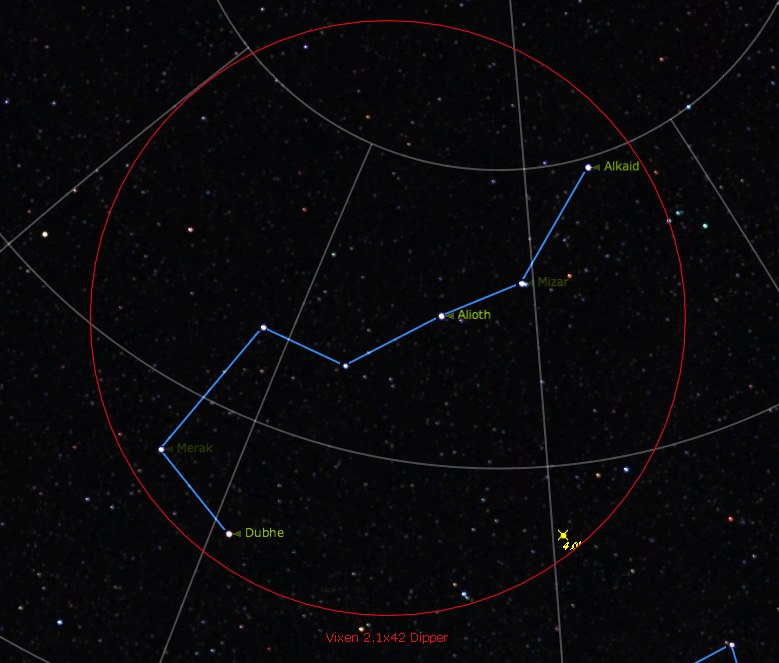
I want to tell about the small soviet binoculars ZOMZ BGSh 2.3×40. BGSh descrypts like “Binoculars Galilean WideAngle” (Shirokougolniy – Wide angle at russian language). Made according to the Galilean scheme (the lens is a collecting lens, the eyepiece is a diffusing lens). Magnification – 2.3x, lens diameter – 40 millimeters.

Lens coating – purple and amber color. On some surfaces there is no coating (white highlights).



I catch focus in this way – I close my right eye and look at the relaxed left eye and twist the eyepiece. Then vice versa – I close my left eye, I look relaxed with my right one. Binoculars are very sensitive to the interpupillary distance – with a correctly established distance between the halves of the binoculars, the star in the center should be a point.

A feature of this binocular is its wide visible field of view – declared 28 degrees! Whole constellations are placed in the visible field of view — for example, the whole “dipper” of Ursa Major or Cygnus from Albereo to Deneb. The field of view of the eyepieces depends on the distance between the pupil and the field lens of the eyepiece – with moderate pressure, the field of view of the eyepieces is about 52-53 degrees. The real field of view is more modest – in my measurements about 20 degrees. The binoculars have a slight pincushion distortion.
There is no such parameter as the eye relief of this binocular – the closer the eyes are to the eyepiece, the larger the field of view. Binoculars are compact and easily fit in a jacket pocket in a native case. With daytime observations, the BGSh 2.3×40 is not as impressive as 7×35 type binoculars, but it does produce a very clear panoramic picture. Along the edges of the image has no clear boundaries, since the eyepiece consists of a diffusing lens. I recommend to unscrew the metal eye-glasses and black out the bright chamfer (edge of the lens) on the eyepiece – so the field of view will be much better defined and the image contrast along the edges will be better.
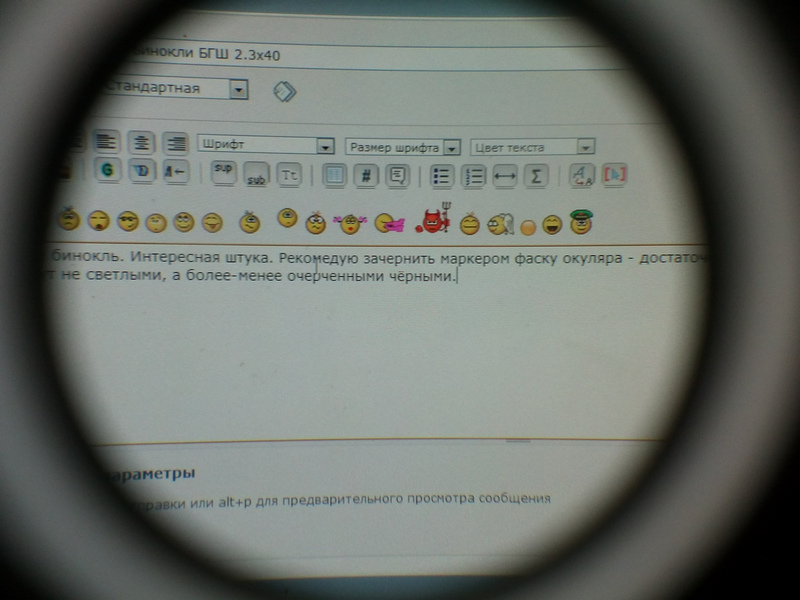
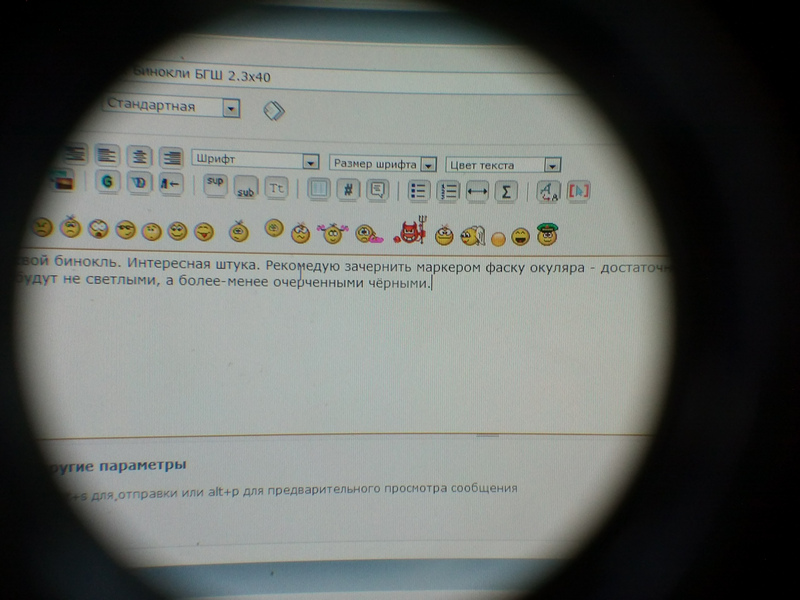

Another disadvantage of the BGSh 2.3×40 binoculars can be attributed to too easy an eyepiece movement, since it is enough to touch the eyepiece with your finger or hook it with your nose – focusing is confused. The problem was solved by completely defocusing the eyepieces with subsequent winding of two layers of electrical tape (red in the photos).


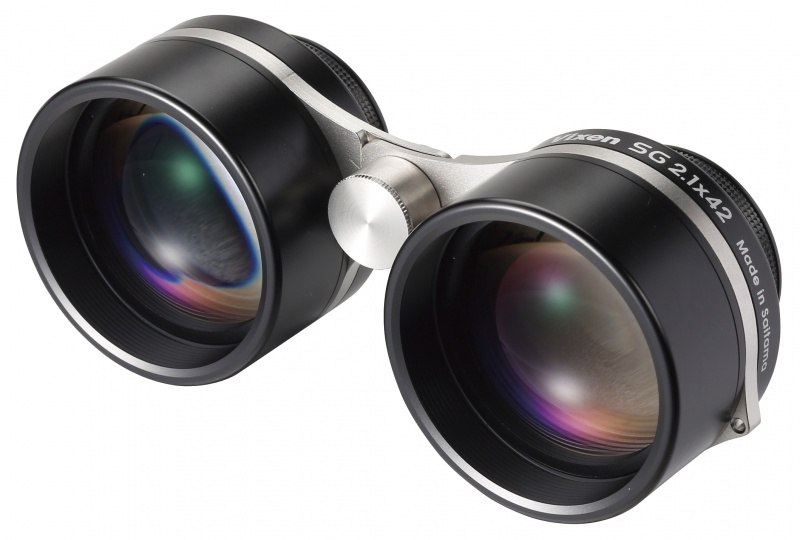
Alas, buying a BGSh 2.3×40 binoculars is hard enough – it is sold only in the secondary market, and sellers ask for a considerable price for it, considering binoculars to be collectible. But SUDDENLY, the Chinese began to produce a copy of the BGSh with the same characteristics, but with improved coating – http://ali.pub/325tun
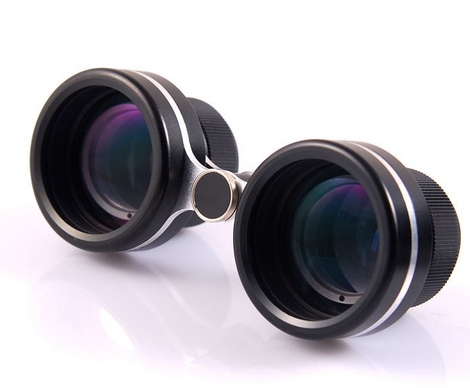
Verdict: BGSh 2.3×40 – cool theater binoculars to study the location of the constellations. Despite its small diameter and small magnification, bright nebulae and star clusters of the Messier catalog are noticeable in BGSh 2.3×40. This binocular is my faithful assistant when observing 300 mm with Dobson. The image quality of the central third of the field of view is not bad, it deteriorates further, on the edge of the star with “birds”, but personally the picture does not cause any complaints. Recommend!
